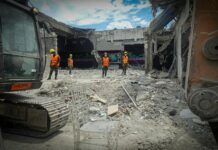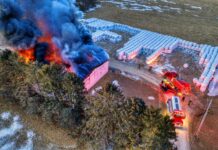
Near Miss Definition (Safety)
Near misses are events that have the potential to cause harm, loss, or damage but, by chance or through timely intervention, do not result in any injury or destruction. In the realm of safety, near misses play a crucial role as early indicators of potential hazards and risks within a workplace or any other environment where safety is a concern.
Understanding Near Misses
What Constitutes a Near Miss?
A near miss can encompass a wide range of incidents, from narrowly avoiding a collision between vehicles to a close call with hazardous materials in a laboratory. Essentially, any event that could have resulted in harm but didn’t qualifies as a near miss.
Examples of Near Misses in Various Industries
In construction, a near miss could involve a worker almost falling from a height due to improper scaffolding. In healthcare, it might be a medication error caught just before administration. Across all industries, near misses serve as warnings that potential dangers exist and need addressing.
Causes of Near Misses
Near misses can stem from various factors, including human error, environmental conditions, and equipment malfunctions.
Human Factors
Miscommunication, lack of training, fatigue, and complacency are common human factors contributing to near misses. Employees may overlook safety protocols or take shortcuts, increasing the likelihood of accidents.
Environmental Factors
Poor lighting, cluttered work areas, slippery floors, or extreme weather conditions can create environments ripe for near misses. Identifying and addressing these factors is essential for preventing accidents.
Equipment Failure
Malfunctioning machinery, defective tools, or inadequate maintenance can lead to near misses. Regular inspections and maintenance schedules can mitigate the risk of equipment-related incidents.
Impact of Near Misses
Beyond their immediate implications, near misses can have lasting effects on both individuals and organizations.
Psychological Impact on Workers
Experiencing a near miss can be traumatic for employees, leading to increased anxiety, stress, and decreased morale. Addressing near misses promptly can alleviate these psychological burdens.
Financial Implications for Companies
While near misses may not result in direct financial losses, they can incur significant costs through downtime, investigations, and potential legal consequences. Preventing near misses can ultimately save companies money in the long run.
Potential for Preventing Accidents
Near misses serve as valuable learning opportunities, allowing organizations to identify and address underlying safety issues before they escalate into accidents. By analyzing near misses, companies can implement proactive measures to prevent future incidents.
Reporting and Investigation
Encouraging a culture of reporting near misses is essential for fostering a safe work environment.
Importance of Reporting Near Misses
Prompt reporting of near misses enables organizations to investigate root causes and implement corrective actions effectively. It also promotes transparency and accountability among employees.
Steps in Investigating Near Misses
Investigating near misses involves gathering relevant information, analyzing contributing factors, and developing preventive measures. Engaging employees in the investigation process fosters ownership of safety initiatives.
Prevention Strategies
Proactive measures are key to reducing the frequency and severity of near misses.
Training and Education
Providing comprehensive training on safety procedures and hazard recognition empowers employees to identify and address potential risks. Ongoing education ensures that safety remains a top priority.
Implementation of Safety Protocols
Establishing clear safety protocols and enforcing compliance are essential for preventing near misses. Regular safety audits and inspections help identify areas for improvement.
Encouraging a Culture of Safety
Promoting open communication, active participation, and recognition of safety achievements cultivates a culture where employees feel empowered to report near misses and suggest safety improvements.
Conclusion
Near misses are invaluable opportunities for organizations to identify and address safety hazards before they escalate into accidents. By fostering a culture of reporting, implementing preventive measures, and leveraging technology, companies can create safer work environments for their employees.
Root Cause Analysis (RCA): Identifying and Addressing Underlying Causes of Safety Incidents
Accident Prevention Plan (APP)
How to Investigate an Incident
Disaster Management: Preparedness, Response, and Recovery
Event Tree Analysis: Accident Investigation Method
FAQs (Frequently Asked Questions)
- Why are near misses important in safety? Near misses provide early warnings of potential hazards, allowing organizations to take preventive action before accidents occur.
- What should I do if I witness a near miss at work? Report the incident to your supervisor or safety officer immediately to ensure proper investigation and preventive measures are taken.
- How can technology help in preventing near misses? Technology such as sensors, predictive analytics, and virtual reality training can identify potential hazards and mitigate risks before near misses occur.
- Are near misses always reported? Unfortunately, many near misses go unreported due to fear of repercussions or a lack of understanding of their significance. However, reporting near misses is essential for preventing future accidents.
- What is the difference between a near miss and an accident? A near miss is an event that could have resulted in harm but didn’t, whereas an accident is an event that causes injury, damage, or loss.

























Many thanks for the refresher as I think near misses are taken as luck and not seen for what is worth